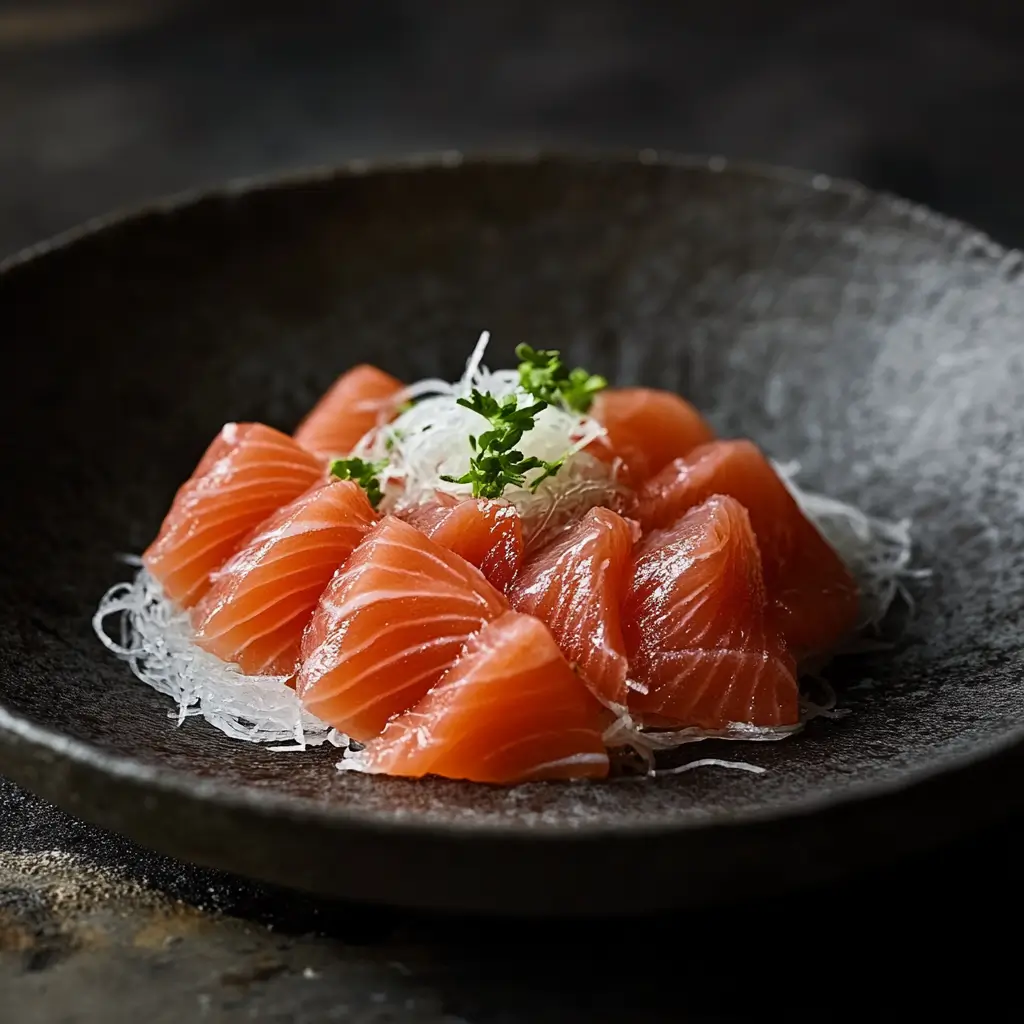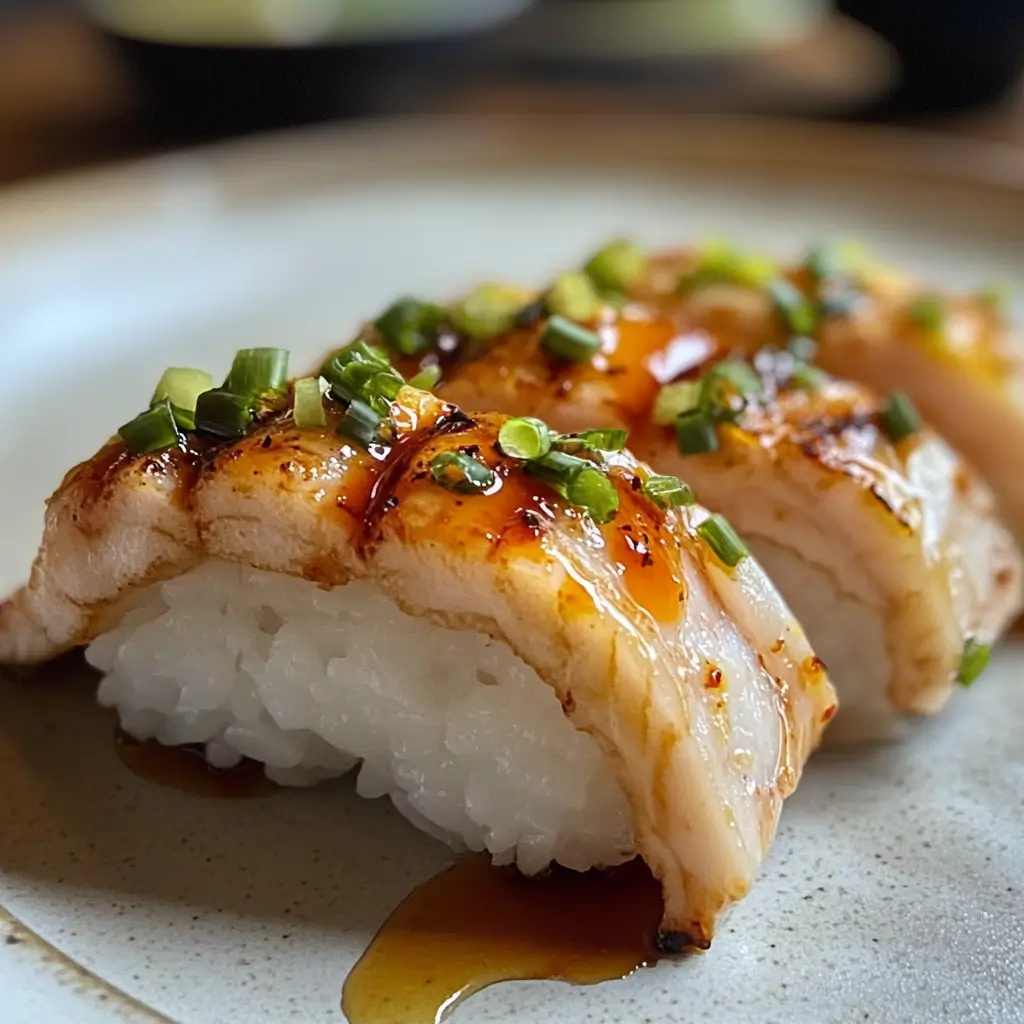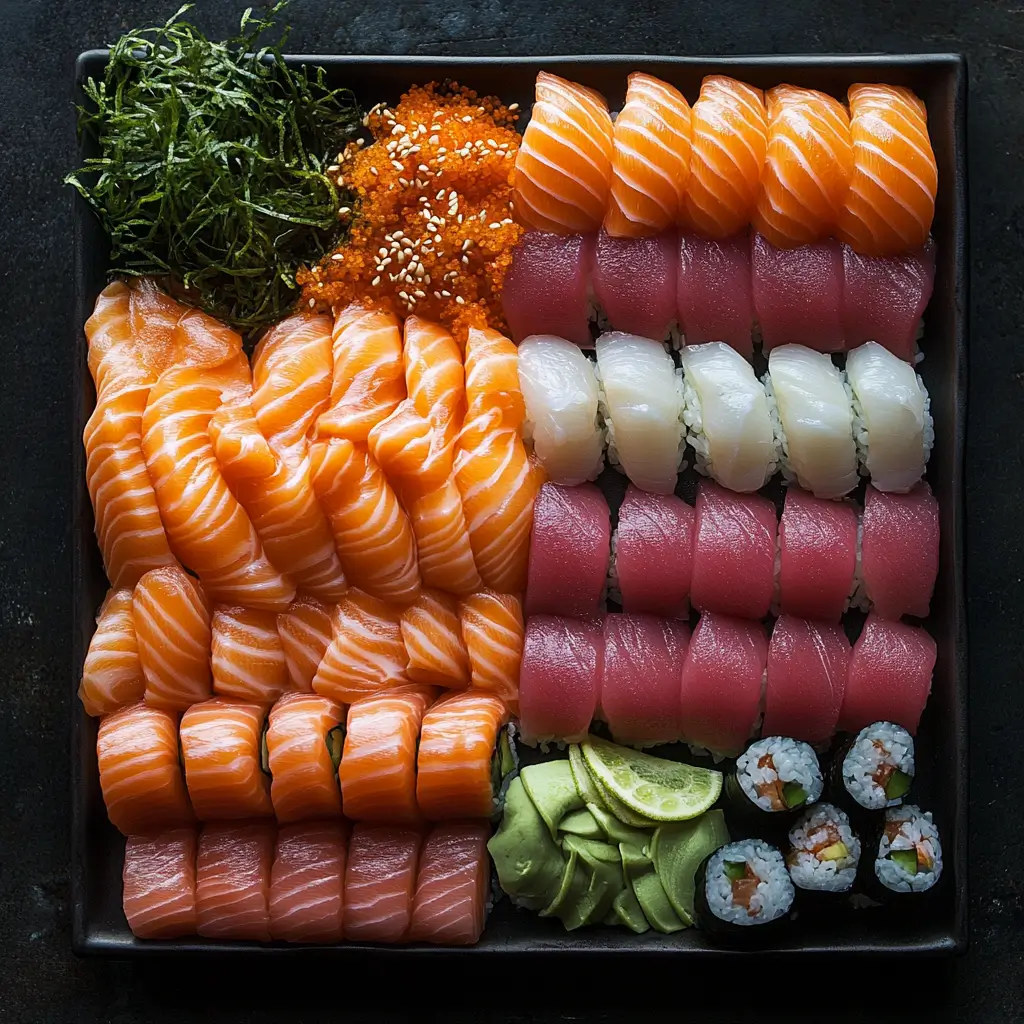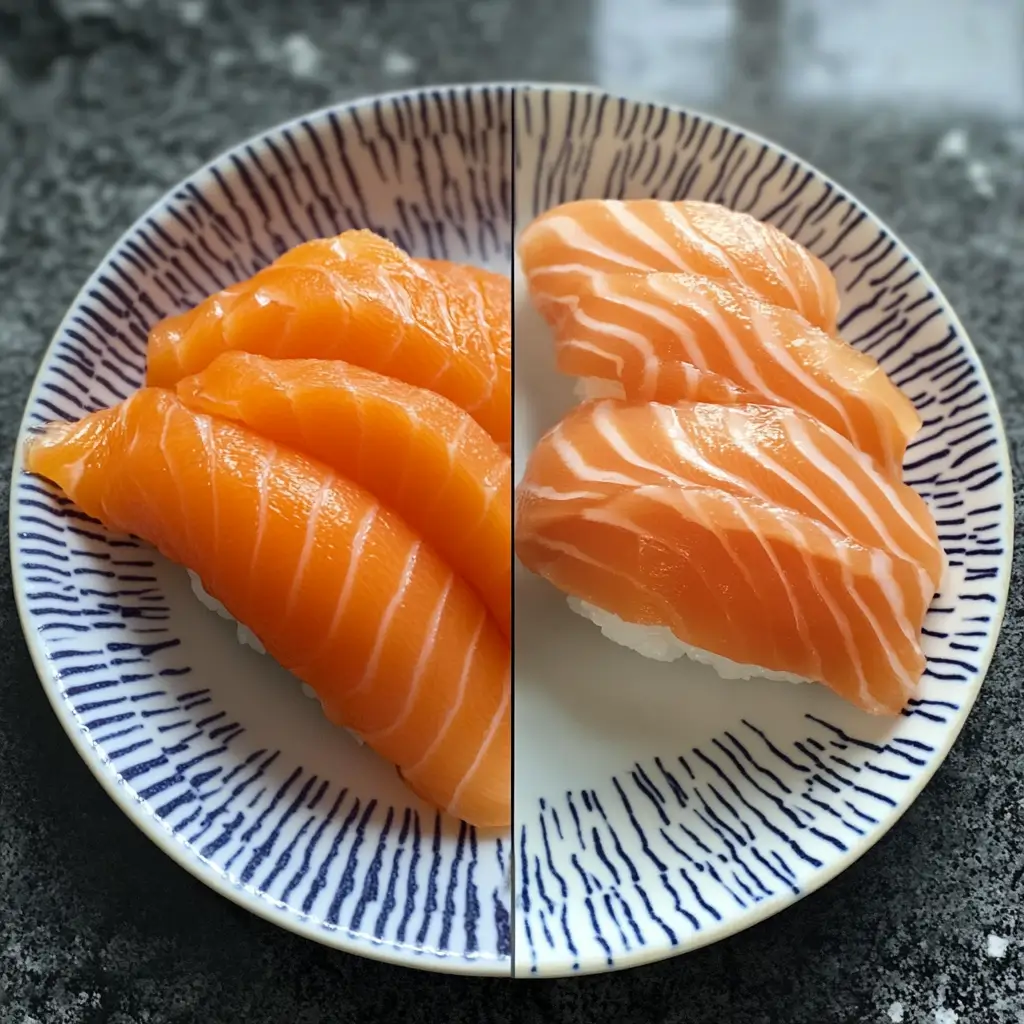Sashimi vs Nigiri: What’s the Difference And Which to Choose?
I remember my first time trying sashimi vs nigiri. It sparked a curiosity in me. I wanted to learn more about these two sushi types. Understanding the differences between sashimi and nigiri can really enhance your appreciation for them.
The choice between sashimi or nigiri depends on what you like. But knowing the differences can change your dining experience.
Exploring sashimi vs nigiri has been an exciting journey. I’m eager to share what I’ve learned with you. From how they’re prepared to the ingredients used, there’s a lot to discover.
Whether you love sushi or are just starting to try Japanese food, this article will help. It will guide you through the main differences between sashimi and nigiri. This way, you can make better choices when it comes to sashimi or nigiri.
Table of Contents
Understanding Sashimi and Nigiri
To truly enjoy sashimi and nigiri, knowing what they are is key. Sashimi is raw fish or meat sliced thinly. It’s all about the freshness and quality of the ingredients. Nigiri, on the other hand, is sushi with a small rice ball topped with raw fish. It’s about mixing flavors and textures.
The sashimi definition focuses on raw ingredients. The nigiri definition highlights sushi rice. Sashimi includes fresh fish or meat, served with soy sauce and wasabi. Nigiri has sushi rice, raw fish, and sometimes wasabi or pickled ginger on top.
What is Sashimi?

Sashimi comes from Japan, with roots in the Edo period. It’s raw fish, like tuna or salmon, served without rice. The focus is on the fish’s freshness and quality.
What is Nigiri?
Nigiri is sushi with raw fish on sushi rice. The rice is made with vinegar and sugar. It’s shaped into small balls and topped with fish or other ingredients. This mix of flavors and textures makes it special.
Key Ingredients in Each
Common ingredients of sashimi are:
- Fresh fish or meat
- Soy sauce
- Wasabi
The ingredients of nigiri are:
- Sushi rice
- Raw fish or other toppings
- Wasabi or pickled ginger
Knowing the ingredients and definitions of sashimi and nigiri helps you enjoy their unique tastes and qualities.
The Presentation of Sashimi
The way sashimi is presented is as crucial as its taste. A well-presented dish can make the dining experience even better. Sashimi is often arranged on a plate with thin slices of raw fish or meat. It’s garnished with shredded daikon radish, shiso leaves, and toasted nori.
The beauty of sashimi lies in the slicing techniques for sashimi. Chefs use special knives, like the Yanagiba knife, for precise cuts. These cuts highlight the fish’s natural texture and color. The slicing method also impacts the flavor and texture, making it key to use the right slicing techniques for sashimi.
Slicing Techniques
Chefs employ various slicing techniques for sashimi to create stunning presentations. Some common methods include:
- Thin slicing: This method is used for delicate fish like salmon or tuna, slicing them into very thin pieces.
- Thick slicing: Thicker pieces are used for heartier fish like mackerel or octopus.
- Diagonal slicing: This technique involves slicing the fish at an angle, adding a dynamic touch to the presentation.
Plating Styles
The plating styles for sashimi can range from simple to elaborate. Some popular styles include:
- Minimalist: This style features a simple arrangement of fish and garnishes.
- Artistic: This style is more elaborate, using sauces and garnishes to add color and texture.
The sashimi presentation is a vital part of the dining experience. Chefs combine slicing techniques for sashimi and plating styles for sashimi to create unforgettable dishes.
The Presentation of Nigiri

The way nigiri is presented is just as key as its taste. A beautifully made piece of nigiri can make your dining experience better. The nigiri presentation usually has a small ball of vinegared rice with a piece of raw or cooked seafood on top. Getting the rice right is important, as it needs to match the flavor and texture of the topping.
The topping choices for nigiri are wide-ranging. You can find everything from classic salmon and tuna to more unique options like uni and tamago. Some favorite types of nigiri include:
- Sake Nigiri: Raw salmon
- Maguro Nigiri: Raw tuna
- Unagi Nigiri: Grilled freshwater eel
Nigiri stands out because of its mix of flavors and textures. By understanding the role of nigiri presentation, rice preparation for nigiri, and topping choices for nigiri, you can see the skill and artistry in making this dish.
| Type of Nigiri | Description |
|---|---|
| Sake Nigiri | Raw salmon |
| Maguro Nigiri | Raw tuna |
| Unagi Nigiri | Grilled freshwater eel |
Taste and Texture Differences
Sashimi and nigiri have different tastes and textures. Sashimi is known for its delicate flavor and firm texture. Nigiri, on the other hand, has a rich flavor and soft texture. The ingredients and how they are prepared shape these differences.
Flavor Profiles of Sashimi
Sashimi is often served with soy sauce, wasabi, and pickled ginger. The quality of the fish or meat adds to its delicate flavor. Popular types include tuna, salmon, and sea bream.
Flavor Profiles of Nigiri
Nigiri has a slice of raw fish on vinegared rice. The fish and rice together create a rich taste. A dollop of wasabi between the rice and fish adds more flavor.
The following table highlights some key differences between sashimi and nigiri:
| Dish | Ingredients | Flavor Profile | Texture |
|---|---|---|---|
| Sashimi | Thinly sliced raw seafood or meat | Delicate, enhanced by soy sauce and wasabi | Firm |
| Nigiri | Raw fish on vinegared rice | Rich, savory, influenced by fish and rice combination | Soft |
In conclusion, sashimi and nigiri offer unique flavor experiences. Understanding their differences helps you enjoy them more.
Common Misconceptions
Many people get sashimi and nigiri mixed up. They think sashimi is a type of sushi, but it’s not. Sashimi is just thinly sliced raw fish or meat. Sushi, on the other hand, includes rice.
Another mistake is thinking nigiri means all sushi. But nigiri is a specific sushi with rice and raw fish. This confusion can make it hard to understand the different sushi types.
Here are the main differences between sashimi and nigiri:
Key Differences
- Sashimi is a dish that consists solely of thinly sliced raw fish or meat
- Nigiri is a type of sushi that features a portion of vinegared rice topped with raw fish or other ingredients
- Sashimi vs sushi is a distinction that is often misunderstood, with many people using the terms interchangeably
Knowing the truth about sashimi and nigiri helps us enjoy them more. It shows us the skill and care that goes into making these dishes.
Pairing Sashimi and Nigiri
When pairing sashimi and nigiri, there are many great options. For sashimi, try it with soy sauce, wasabi, and pickled ginger. These add to the fish’s delicate flavors.
For nigiri, consider miso soup, salad, or tempura. These sides contrast nicely with the sushi rice and fish. Pairing sashimi and nigiri with different sides can really highlight their unique qualities.
Here are some popular pairing options:
- Sake: a classic pairing for both sashimi and nigiri
- Green tea: a refreshing contrast to the richness of the sushi
- Miso soup: a traditional Japanese soup that pairs well with nigiri
Exploring these pairings can reveal new flavors and textures. Whether you like sashimi’s simplicity or nigiri’s complexity, there’s a way to enjoy each dish. With some experimentation, you can find the perfect match for your taste.
| Pairing Option | Sashimi | Nigiri |
|---|---|---|
| Sake | Yes | Yes |
| Green Tea | Yes | Yes |
| Miso Soup | No | Yes |
Nutritional Differences

Understanding the nutritional differences between sashimi and nigiri is key. Sashimi is lower in calories and higher in protein, making it a favorite among health-conscious eaters. Raw fish is packed with protein and low in saturated fat, adding nutritional value to any meal.
The caloric content of each dish is a crucial factor. Sashimi is rich in protein and low in carbs. On the other hand, nigiri has more carbs and calories due to its rice. For example, a piece of nigiri can have 40 to 60 calories, depending on the fish and rice. In contrast, sashimi, which is 3 ounces, has about 180 calories, mostly from protein.
Raw fish offers many health benefits. It’s full of omega-3 fatty acids, which are good for the heart and reduce inflammation. It also has selenium, vitamin B, vitamin D, and magnesium, all of which are essential for well-being. Knowing these benefits helps us choose sashimi and nigiri wisely, enjoying their taste while getting nutritional value.
Making Sashimi and Nigiri at Home
To make sashimi and nigiri at home, you need the right tools. A sharp knife, like a Yanagiba knife, is key for slicing raw fish thinly. You’ll also need a cutting board and a sushi mat for sushi rice preparation.
Making sashimi and nigiri at home is easy. Start with a simple recipe using fresh fish like salmon or tuna for sashimi. For nigiri, try a classic like salmon or shrimp on sushi rice. You’ll need:
Essential Tools
- A sharp knife, such as a Yanagiba knife
- A cutting board
- A sushi mat
With these tools and a few basic recipes, making sashimi and nigiri at home is fun. You can try different ingredients and flavors. It’s a great way to enjoy Japanese cuisine and appreciate the art of sushi-making.
Basic Recipes to Try
Try simple sashimi dishes with fresh ingredients and classic nigiri like salmon or shrimp. With practice, you can make delicious sashimi and nigiri at home. Enjoy the process and the taste of your creations.
Personal Experiences with Sashimi and Nigiri
My journey with sashimi and nigiri began with a simple curiosity. I remember my first encounter with these dishes, and it was love at first bite. The delicate flavors and the freshness of the ingredients left an indelible mark on my palate.
Over the years, I’ve had the pleasure of exploring various sushi restaurants, each offering its own unique take on sashimi and nigiri. From the bustling streets of Tokyo to the serene coastal towns of California, I’ve savored the artistry of sushi chefs from around the world.
One of my favorite memories is a visit to a small sushi bar in Kyoto. The chef, a master of his craft, carefully prepared each piece of sashimi and nigiri, paying attention to every detail. The combination of the perfectly balanced flavors and the impeccable presentation left me in awe.
Another memorable experience was at a sushi restaurant in New York City. The chef’s creativity and attention to detail were evident in every dish. From the vibrant colors of the sashimi to the delicate texture of the nigiri, it was a true culinary masterpiece.
These personal experiences have deepened my appreciation for sashimi and nigiri. Each bite transports me to a different place, evoking memories and emotions. It’s a testament to the power of food to connect us and create lasting memories.
Favorite Places to Enjoy Sashimi and Nigiri
While I’ve had the pleasure of enjoying sashimi and nigiri in many places, there are a few restaurants that hold a special place in my heart. These establishments have consistently delivered exceptional flavors and impeccable presentation, making them my go-to destinations for a sushi fix.
One of my favorite places is Sushi Omakase in Tokyo. The chef’s attention to detail and commitment to using only the freshest ingredients make it a must-visit for any sushi lover. The combination of the vibrant colors and the delicate flavors of the sashimi and nigiri is truly unforgettable.
Another favorite of mine is Sushi Bar in San Francisco. The chef’s creativity and ability to create unique flavor combinations make it a standout destination. From the bold flavors of the sashimi to the delicate texture of the nigiri, every dish is a work of art.
These are just a few examples of the many places I’ve enjoyed sashimi and nigiri. Each restaurant offers its own unique experience, and I highly recommend exploring different establishments to discover your own favorites.
Memorable Nigiri Experiences
While sashimi is often the star of the show, nigiri has its own special place in my heart. The combination of the delicate flavors and the perfectly balanced textures creates a truly memorable experience.
One of my favorite nigiri experiences was at a small sushi restaurant in Osaka. The chef’s attention to detail and commitment to using only the freshest ingredients made each piece of nigiri a work of art. The combination of the delicate flavors and the perfectly balanced textures left me in awe.
Another memorable nigiri experience was at a sushi restaurant in Los Angeles. The chef’s creativity and ability to create unique flavor combinations made each piece of nigiri a true culinary masterpiece. The combination of the vibrant colors and the delicate flavors was truly unforgettable.
These are just a few examples of the many memorable nigiri experiences I’ve had. Each piece of nigiri has its own unique characteristics, and exploring different restaurants is the best way to discover your own favorites.

